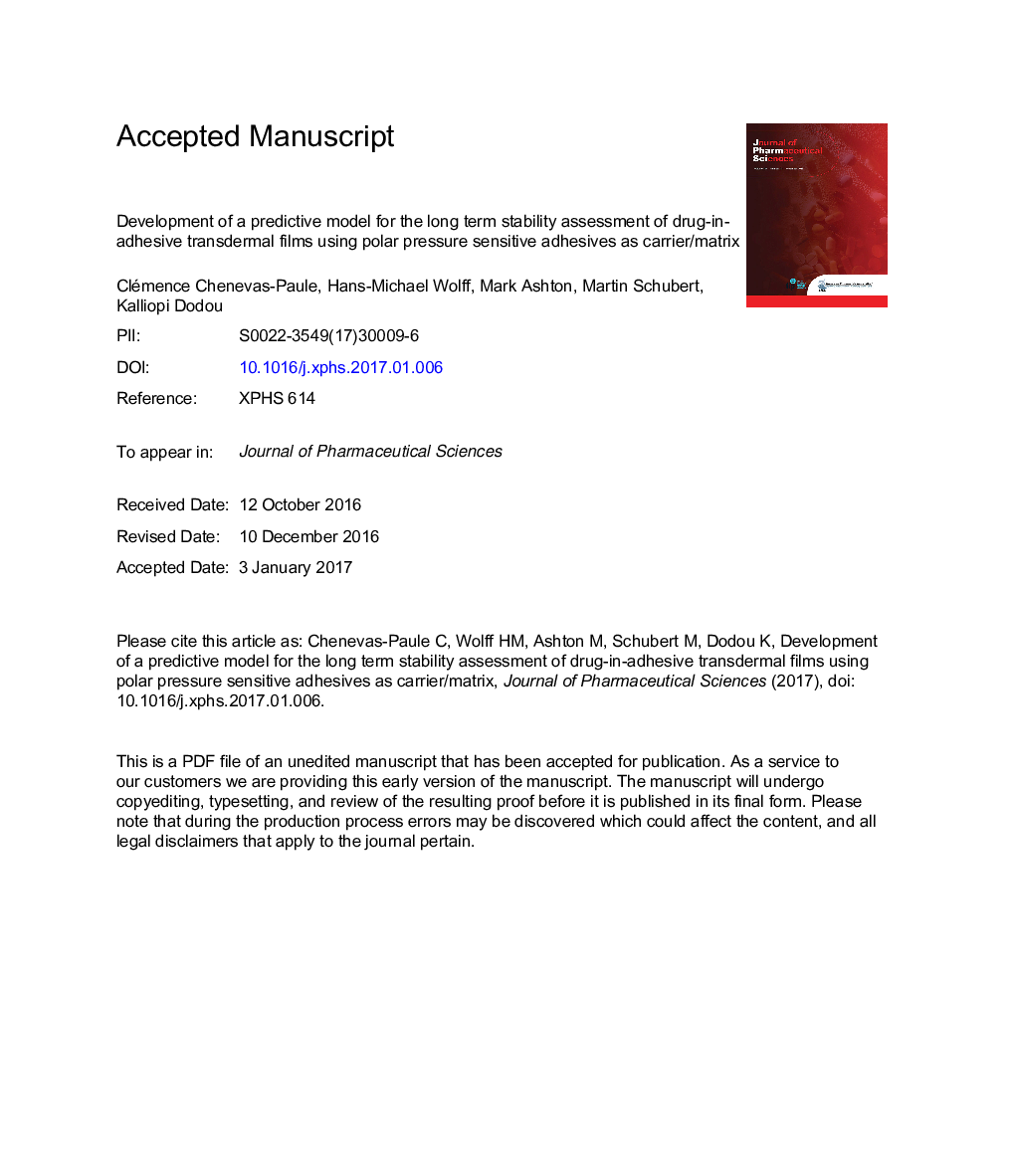| Article ID | Journal | Published Year | Pages | File Type |
|---|---|---|---|---|
| 8514274 | Journal of Pharmaceutical Sciences | 2017 | 41 Pages |
Abstract
Drug crystallization in transdermal drug delivery systems is a critical quality defect. The impact of drug load and hydration on the physical stability of polar (acrylic) drug-in-adhesive (DIA) films was investigated with the objective to identify predictive formulation parameters with respect to drug solubility and long-term stability. Medicated acrylic films were prepared over a range of drug concentrations below and above saturation solubility and were characterized by Fourier transform infrared spectroscopy, differential scanning calorimetry, polarized microscopy, and dynamic vapor sorption (DVS) analysis. Physical stability of medicated films was monitored over 4Â months under different storage conditions and was dependent on solubility parameters, Gibbs free energy for drug phase transition from the amorphous to the crystalline state, and relative humidity. DVS data, for assessing H-bonding capacity experimentally, were essential to predict physical stability at different humidities and were used together with Gibbs free energy change and the Hoffman equation to develop a new predictive thermodynamic model to estimate drug solubility and stability in DIA films taking into account relative humidity.
Keywords
DVSDSCASAGibbs free energy of mixingTDDsAPISAATransdermalPSAAmorphousThermal analysisacetylsalicylic acidSalicylic acidCrystallizationThermodynamicsEquilibrium constantPhysical stabilityWater sorptiondynamic vapor sorptionEnthalpy of fusionTemperatureglass transition temperatureRelative humidityDIAPolymeric drug delivery systemTransdermal drug delivery systemsactivityIbuprofenIbuMathematical modelActive Pharmaceutical IngredientDrug-in-adhesiveHydrationFlory-Huggins interaction parameterSolubility parameterpressure-sensitive adhesiveDifferential scanning calorimetryGas chromatographyVolume fractionMolar fraction
Related Topics
Health Sciences
Pharmacology, Toxicology and Pharmaceutical Science
Drug Discovery
Authors
Clémence Chenevas-Paule, Hans-Michael Wolff, Mark Ashton, Martin Schubert, Kalliopi Dodou,
